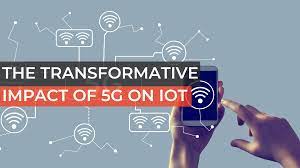The Fundamentals of 5G Technology
telcomatraining.com – In recent years, 5G technology has become a prominent topic in the world of telecommunications. As the fifth generation of wireless technology, 5G promises faster speeds, lower latency, and more reliable connections. But what exactly is 5G, how does it work, and why is it so important? This article explores the fundamentals of 5G technology, its key features, applications, and its impact on the future of connectivity.
What is 5G Technology?
5G stands for “fifth generation” and represents the latest advancement in mobile networks, succeeding 4G LTE. It is designed to support an increasingly connected world, where billions of devices, from smartphones to smart homes and autonomous vehicles, require high-speed, low-latency internet access.
Unlike previous generations, 5G does not rely on a single frequency band. Instead, it utilizes a combination of low-band, mid-band, and high-band spectrum (also known as millimeter waves). This allows 5G to deliver not only faster speeds but also greater capacity and coverage.
Key Features of 5G
- Ultra-Fast Speeds
5G can offer download speeds of up to 10 Gbps, which is up to 100 times faster than 4G. This allows users to download movies in seconds and stream 4K or even 8K videos without buffering. - Low Latency
Latency is the time it takes for data to travel from one point to another. 5G reduces latency to as low as 1 millisecond, enabling real-time communication for applications like gaming, virtual reality (VR), and remote surgery. - Increased Capacity
5G networks can support a significantly higher number of connected devices per square kilometer. This is critical for the Internet of Things (IoT), where smart cities, homes, and industries rely on seamless device interconnectivity. - Network Slicing
One of the innovative features of 5G is network slicing. It allows operators to create multiple virtual networks within a single physical 5G network. Each “slice” can be customized to meet the needs of specific applications, ensuring optimal performance. - Improved Reliability and Coverage
With advancements in antenna technologies like Massive MIMO (Multiple Input, Multiple Output), 5G ensures better coverage, even in dense urban areas or inside buildings.
How 5G Works
5G technology relies on a dense network of small cell towers and base stations to transmit data using radio frequencies. High-band 5G, while offering the fastest speeds, has a shorter range and is more easily blocked by obstacles like buildings. To counter this, a combination of small cells and beamforming technologies is used to direct signals precisely to users, enhancing signal strength and reliability.
Mid-band 5G offers a balance between speed and coverage, while low-band 5G provides broader coverage but at slower speeds. This layered approach ensures a comprehensive and efficient 5G network.
Applications of 5G Technology
The potential applications of 5G are vast and transformative:
- Healthcare: Enables remote surgeries, real-time patient monitoring, and faster data transfer between devices.
- Transportation: Powers autonomous vehicles with real-time traffic data and vehicle-to-vehicle communication.
- Industry 4.0: Supports smart factories with robotics, AI, and automation.
- Entertainment: Enhances experiences in AR/VR, cloud gaming, and high-definition streaming.
- Smart Cities: Facilitates efficient energy management, traffic control, and public safety systems.
The Future of 5G
The global rollout of 5G is already underway, with many countries investing heavily in infrastructure. As adoption grows, 5G is expected to contribute trillions of dollars to the global economy over the next decade. However, challenges remain, including infrastructure costs, spectrum allocation, and security concerns.
Conclusion
5G technology marks a revolutionary step forward in mobile communication. With its unparalleled speed, low latency, and high capacity, it is set to transform every aspect of modern life—from how we communicate and work to how we travel and receive medical care. Understanding the fundamentals of 5G helps individuals and businesses prepare for a future defined by hyper-connectivity and technological innovation.







